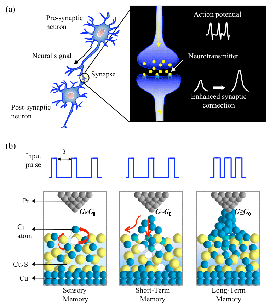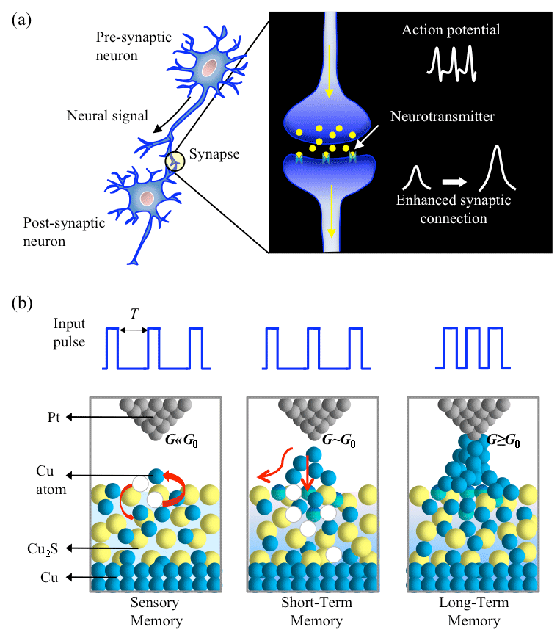 Press Release 2012
Press Release 2012
Development of Synaptic Devices that change operations in response to their immediate environment
Expectation placed on the development of Neuro-Computers that interact with people and environments

Figure. (a) In a biological synapse, the arrival of an action potential releases neurotransmitters that assist ion channels for signal transmission. Frequent stimulation by action potential results in a persistent increase in the synaptic connection. (b) Schematic illustration of a Cu2S gap-type atomic switch in sensory memory (SM), short-term memory (STM), and long-term memory (LTM) states depending on the interval (T) of the input voltage pulse stimulation.

Figure 1. (a) In a biological synapse, the arrival of an action potential releases neurotransmitters that assist ion channels for signal transmission. Frequent stimulation by action potential results in a persistent increase in the synaptic connection. (b) Schematic illustration of a Cu2S gap-type atomic switch in sensory memory (SM), short-term memory (STM), and long-term memory (LTM) states depending on the interval (T) of the input voltage pulse stimulation.
Further information
Publications/Affiliation
- International Center for Materials Nanoarchitectonics (MANA), National Institute for Materials Science (NIMS)
- Department of Chemistry and Biochemistry, University of California, Los Angeles (UCLA), USA
- California NanoSystems Institute (CNSI), University of California, Los Angeles (UCLA), USA
 nims.go.jp
nims.go.jp

